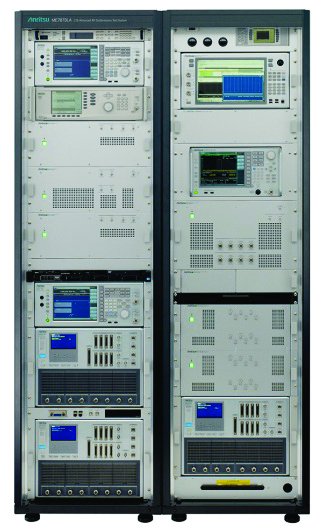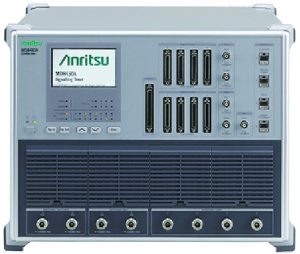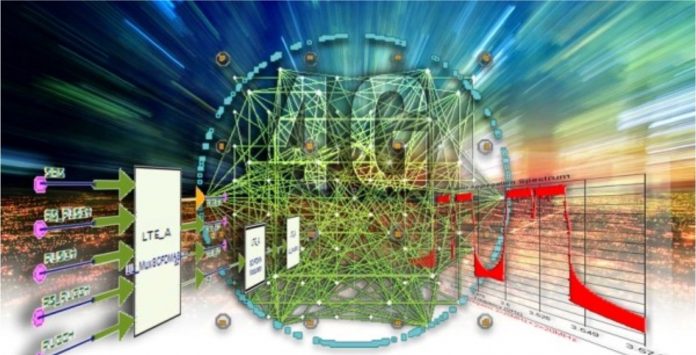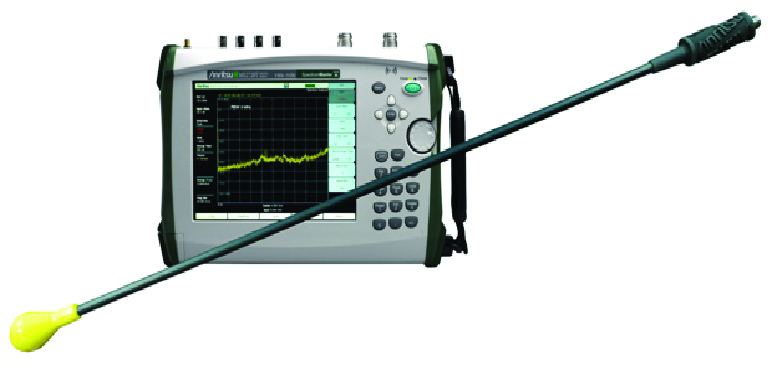Anritsu offers a complete line of LTE test equipment to ensure the performance and quality of your LTE equipment and networks. Anritsu LTE and LTE-A test and measurement solutions are used in research, design development production and network maintenance. Anritsu cover RF, MW, Front haul, Mobile backhaul, Transport/Optical/IP and UE Terminal testing domain for LTE and LTE-A technology.
Anritsu Signalling Tester MD8430A is the first complete LTE-Advanced Base Station Simulator. Couple the Fading Simulator MF6900A with the Base Station Simulator MD8430A to provide a reproducible fading environment that is essential for evaluating LTE-Advanced. The Signal Analyzer provides complete LTE uplink and downlink analysis in a one-box platform that includes signal analysis and signal generation. Anritsu Vector Signal Generator produces realistic and reproducible LTE signals and our LTE IQ producer software provides a graphical interface that lets the user easily generate LTE-compliant waveforms.
LTE is the first technology designed explicitly for Next Generation Networking (NGN) and is set to become the de-facto NGN mobile access network standard. It takes advantage of NGN capabilities to provide an always-on mobile data experience comparable to wired networks.
- LTE-Advanced supports peak data rates of more than 300 Mbps on the downlink when using Carrier Aggregation (2 x 20 MHz channel bandwidth) with 2×2 MIMO or 4×2 MIMO and two times the throughput on 3GPP Release 8/9.
- LTE supports peak data rates of 150 Mbps on the downlink when using 20 MHz channel bandwidth, two transmit antennas at the base station and two receive antennas at the User Equipment (UE). LTE also supports peak data rates of 50 Mbps on the uplink when using a 20 MHz channel bandwidth; and single transmit antennas at the UE and base station.
- LTE generates ten to twelve times the throughput on the downlink and eight to ten times the throughput on the uplink relative to 3GPP Release 6.
- LTE improves spectrum efficiency as defined relative to Release 6. The uplink and downlink capabilities are two to four times the spectral efficiency of High-Speed Packet Access (HSPA).
- LTE has flexible duplex methods. Both Frequency Division Duplex (FDD) and Time Division Duplex (TDD) are valid spectrum allocations and allow LTE to accommodate various channel bandwidths in the available spectrum.
- LTE interoperates with W-CDMA, GSM, and CDMA2000 systems. Multimode UEs will support handover to and from these other systems.
- Legacy technologies such as HSPA Evolution and Enhanced EDGE will continue to operate within the new network architecture.
TDD/FDD Access
LTE standards support the use of both Time Domain Duplex (TDD) and Frequency Domain Duplex (FDD) from the same set of standards, and with the same air interface characteristics.
MIMO
Multiple Input Multiple Out (MIMO) is an antenna technology that, together with signal processing, can either increase capacity (spatial multiplexing) or signal-to-noise ratio (transmit diversity) in a radio link.
In LTE using 2×2 / 4×2 MIMO with spatial multiplexing, the user data is separated into two data sets each fed to two / four transmit antennas and received by two receive antennas. Because of multi-path, each data set travels a distinct RF path with different propagation characteristics. The algorithm used to split and recombine the data allows the system to make use of the independence of these two paths in order to improve throughput. The two data streams occupy the same RF channel at the same time. This doubles the data rate possible on the air interface link.
When using MIMO with transmit diversity, the same user data is transmitted from both antennas, and at each receiver, replicas of the signal are processed. This duplication enhances signal-to-noise ratio and improves signal robustness.
Downlink Key Features
- OFDM-based, 15 kHz sub-carrier spacing
- BPSK, QPSK, 16QAM, 64QAM modulation
- Variable RF bandwidth, 1.4 MHz to 20 MHz
- MIMO in the form of transmit diversity or spatial multiplexing
- Scheduling, link adaptation, HARQ and measurements similar to 3.5G
- MBMS
- Carrier Aggregation
- elCIC / FelCIC / CoMP
Uplink Key Features
- Single Carrier FDMA, 15 kHz sub-carrier spacing
- BPSK, QPSK, 16QAM, 64QAM modulation
- Variable RF bandwidth, 1.4 MHz to 20 MHz
- Scheduling, link adaptation, HARQ and measurements similar to 3.5G
- Random access procedures
- Carrier Aggregation
The LTE-Advanced RF Conformance Test System ME7873LA
 The LTE-Advanced RF Conformance Test System ME7873LA automates RF and RRM tests for mobiles supporting the latest 3GPP standards. In addition to legacy W-CDMA, the future proof ME7873LA supports both the latest LTE-Advanced standard and newer standards under discussion. As well as R&D test functions, FDD and TDD mobile frequency bands and TRx tests are supported along with freely customized system configurations for performance and RRM tests.
The LTE-Advanced RF Conformance Test System ME7873LA automates RF and RRM tests for mobiles supporting the latest 3GPP standards. In addition to legacy W-CDMA, the future proof ME7873LA supports both the latest LTE-Advanced standard and newer standards under discussion. As well as R&D test functions, FDD and TDD mobile frequency bands and TRx tests are supported along with freely customized system configurations for performance and RRM tests.
An Anritsu Support Service contract keeps the system operating at peak performance, maximizing return on investment, minimizing downtime, and keeping work on schedule.
- Latest software updates matching the latest changes to the 3GPP standards
- Information on 3GPP trends, consultation and technical support for troubleshooting test problems
- Free hardware repair and maintenance with a back-up loan unit.
- Most and First GCF/PTCRB Approved Test Cases
- Supports Latest 3GPP Standards
- Multiple hardware configurations tailored to measurement requirements, TRx, Performance and RRM
- Tunable filtering supports multiple bands with no hardware upgrade
- Capable of Inter-RAT handover measurements LTE to/from UMTS/TD-SCDMA, and LTE to GSM/CDMA2000
Best VoLTE or LTE Broadcast Product
 Anritsu Signaling Tester MD8430A received the Best VoLTE or LTE Broadcast Product award at the 2016 5G & LTE North America Awards held on November 14-16 in Dallas USA. The MD8430A was recognized for its innovation and exceptional impact for R&D test within the LTE eco-system.
Anritsu Signaling Tester MD8430A received the Best VoLTE or LTE Broadcast Product award at the 2016 5G & LTE North America Awards held on November 14-16 in Dallas USA. The MD8430A was recognized for its innovation and exceptional impact for R&D test within the LTE eco-system.
About MD8430A:
Key Features:
- Supports LTE-Advanced FDD/TDD Carrier Aggregation (CA) 2CCs, 3CCs and 4CCs
- Supports LTE-Advanced FDD/TDD Release 12
- One MD8430A supports CA handover, 4×4 MIMO and 8×4 MIMO, etc
- Supports full-digital fading test
- Supports DL 1 Gbps (3CCs, 4CCs), UL 100 Mbps throughput test
- Inter-RAT tests making effective use of previous MD8480C (UTRAN/GERAN), and MD8475A (CDMA2000) hardware investments
- Optimized investment from first R&D to protocol conformance testing
- Full development and analysis toolset cuts L1, L2 and L3 scenario development time and costs
Wireless devices are evolving quickly into multimedia smartphones with fast data connections due to widespread deployment of high-speed standards, such as LTE/LTE-Advanced. The Signalling Tester MD8430A is a key LTE-Advanced base station simulator for developing LTE-Advanced-compliant chipsets and wireless devices. In addition to verifying normal communications procedures, it supports fault operation tests, which are difficult to perform at connection with live base stations. It also supports LTE/LTE-Advanced terminal R&D and verification tests under various conditions. Based on extensive experience in 3G markets, Anritsu has developed the MD8430A as a powerful LTE-Advanced protocol/R&D test solution to help developers bring LTE-Advanced wireless devices to market as fast as possible.
A choice of MD8430A models designed for early chipset and UE development, function tests, and performance tests ranging from carrier acceptance to protocol conformance tests, plus retrofit upgrades between models, allows developers to customize their hardware investment to current needs while assuring flexible future upgrade options.
- LTE Standard Test Model (STM)
- LTE Performance Test Model (PTM)
- LTE Enhanced Test Model (ETM)
Due to hybrid network on single site PIM Testing is becoming more popular. Deployment of LTE network has pushed MNO to test PIM. Anritsu offers PIM Master & PIM Hunter for LTE Wireless network field testing.
PIM Hunter satisfies the global market need for a simple, efficient method of addressing a growing concern for mobile operators. It complements Anritsu’s patented Distance-to-PIM (DTP) technology that determines the distance between the antenna and external PIM. A technician can walk along the arc of that distance with PIM Hunter to detect the exact source of the external PIM. Integrating PIM Hunter with any of the compatible Anritsu handheld analyzers featuring Burst Detect Sweep Mode creates the tool set required to precisely identify external PIM sources for faster site repair. It is especially useful for detecting PIM on rooftops, the most common location for network densification in urban environments.
PIM Hunter has been custom designed to support external PIM identification over the 600 MHz to 2700 MHz frequency range. With the PIM Hunter test probe connected to a spectrum analyzer in burst detect mode and an appropriate band-pass filter installed, technicians can track and locate IM3 signal sources that cause PIM. When the probe tip comes in close proximity to a source, the PIM value increases by as much as 30 dB, indicating the precise location of the interferer.
Unlike traditional near field probes, the PIM Hunter utilizes patent-pending technology to return a consistent signal level regardless of probe orientation with respect to the PIM source. Accuracy is further assured because the probe is manufactured using low PIM construction techniques so the probe does not act as a PIM source. A 35-inch (0.9 m) extension shaft allows the test operator to remain a safe distance away from antennas under test.
The PIM Master MW82119B is a 40 Watt, battery-operated PIM analyzer featuring Site Master™ line sweep capability. With the Site Master option, the PIM Master can fully certify cable and antenna system performance, measuring PIM, Distance-to-PIM, Return Loss, VSWR, Cable Loss and Distance-to-Fault. Anritsu’s Spectrum Master family consists of four models that provide excellent flexibility for locating, identifying, recording, and solving communication systems problems without sacrificing measurement accuracy. The BTS Master high-performance handheld base station analyzers have been specifically developed to support 4G/3G/2G and WiMAX networks, as well as CPRI RF and BBU emulation.
Anritsu is dedicated to supporting the continued evolution of LTE and LTE Advanced, as well as migration to 5G test requirements. As 5G R&D and integration requirements continue to accelerate, Anritsu will keep pace by providing solutions in a manner similar to our 4G leadership position so wireless chipset, device manufacturers and carriers have the highly accurate and cost-efficient solutions they require for success of telecom eco system.









